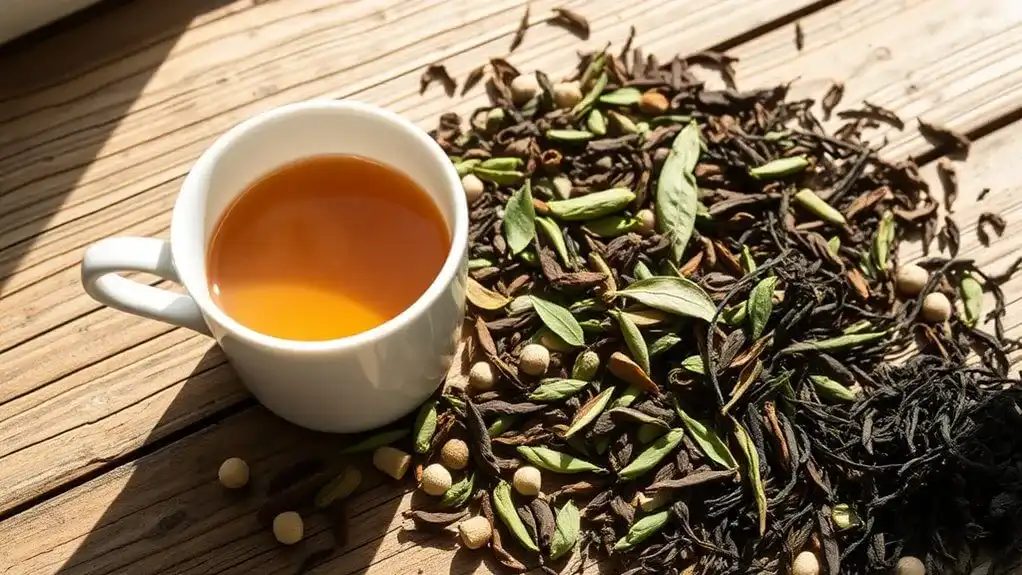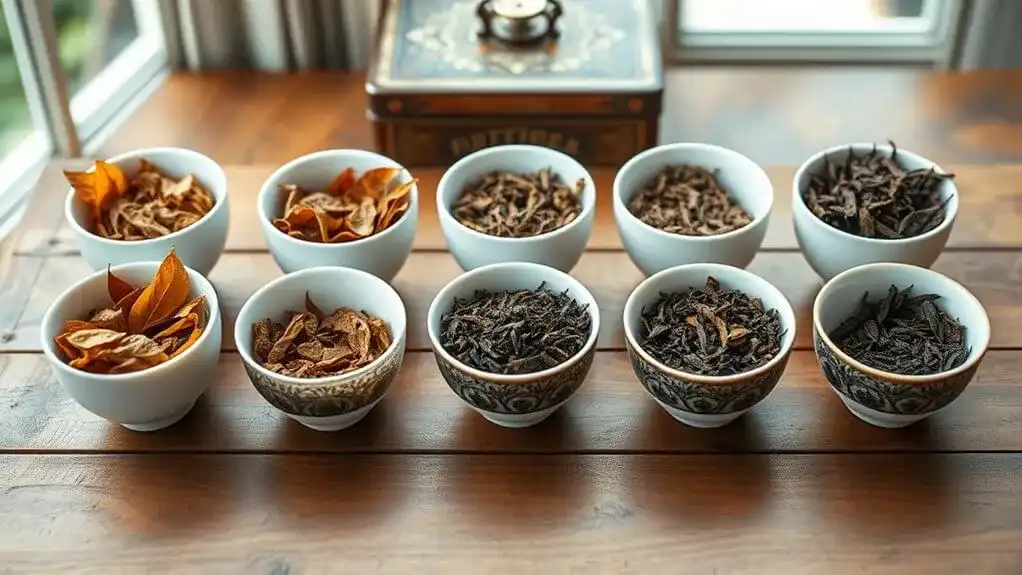Essential tea vocabulary encompasses key terms across processing, tasting, and brewing methods. Tea enthusiasts need to understand withering, oxidation, and fermentation techniques, along with flavor descriptors like aromatic, astringent, and complex. They'll encounter equipment terms such as gaiwan, chasen, and temperature-controlled kettles. From traditional black teas to specialty oolongs, mastering this vocabulary opens up a world of deeper appreciation and understanding of tea culture.
Key Points
- Aromatic, astringent, and complex are fundamental descriptors used to communicate tea characteristics and tasting experiences.
- Tea flavor profiles include foreground (initial taste), middle ground (body), and background notes (lingering finish).
- Common taste descriptors include floral, nutty, buttery, sweet, and spicy notes found across different tea varieties.
- Processing terminology covers withering, oxidation, rolling, and drying – the four fundamental steps of tea production.
- Brewing-specific terms describe water temperature, steeping time, and equipment like gaiwans and infusers.
Understanding Tea Processing Methods and Techniques
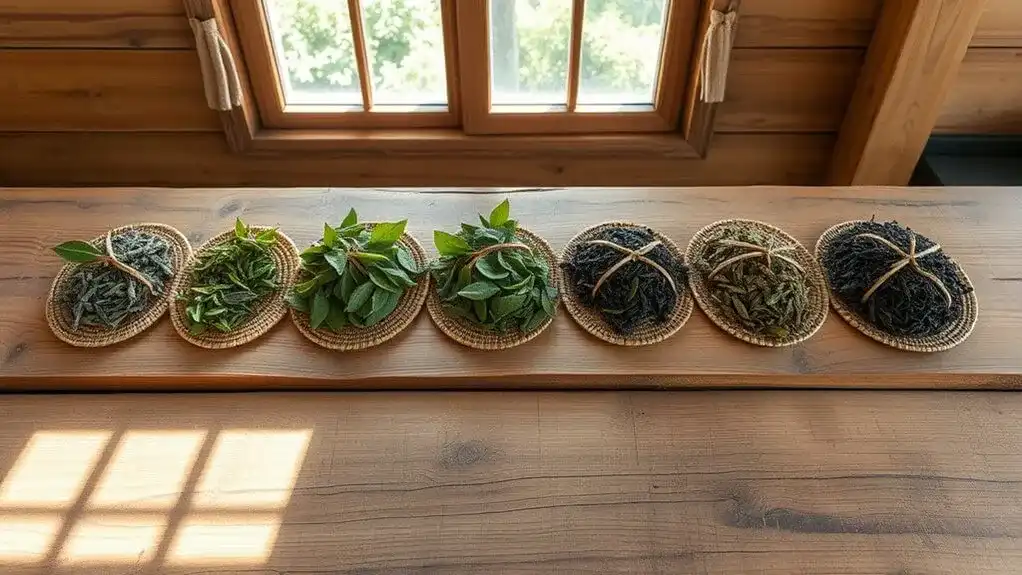
Four fundamental steps transform fresh tea leaves into the diverse varieties we enjoy today: withering, oxidation, rolling, and drying. The withering process begins by reducing the moisture content from 75% to 45% over 8-18 hours on mesh surfaces or bamboo trays under cool air. Manual harvesting of tea leaves remains important as high-quality tea production depends on careful leaf selection. All true teas derive from the Camellia Sinensis plant. Each type of tea requires specific water temperatures, with delicate white teas needing cooler water around 160°F for optimal brewing.
Tea processing methods fall into two main categories: orthodox and CTC (crush, tear, curl). The orthodox method preserves whole leaves and creates complex flavors, while CTC produces smaller pieces ideal for tea bags. Different fermentation levels determine the final tea variety. Non-fermented teas like green tea undergo minimal oxidation, semi-fermented oolong teas range from 10% to 80% oxidation, and black teas are fully fermented. Some teas require specialized techniques, such as fixation to halt oxidation or sweltering to create yellow teas.
Mastering Tea Tasting Terms and Flavor Profiles
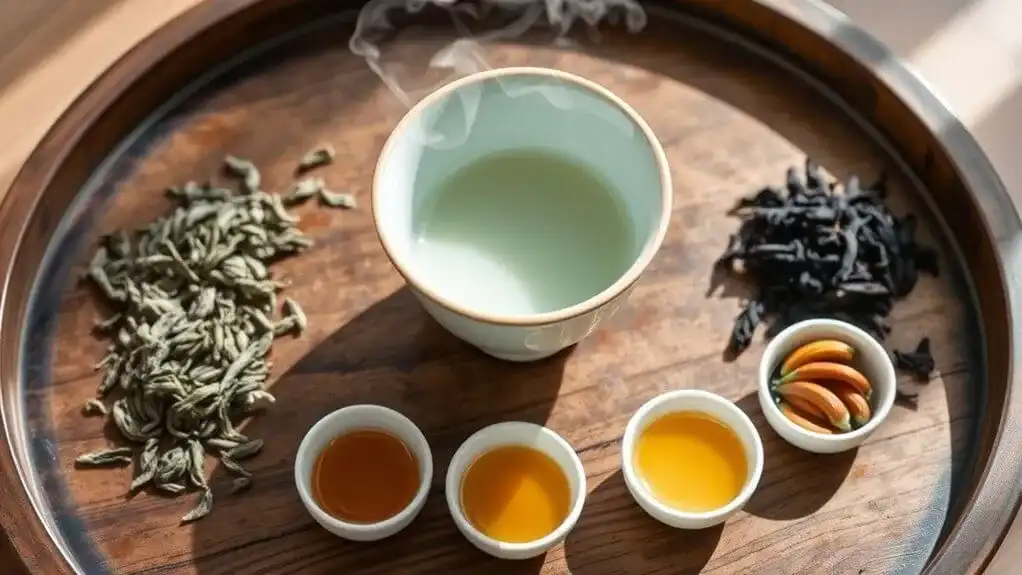
Just as wine enthusiasts develop a sophisticated palate, tea connoisseurs must master a specific vocabulary to articulate the complex flavors and characteristics of different teas. Understanding terms like "aromatic," "astringent," and "complex" helps in describing the tea aroma and overall drinking experience. Experienced tasters evaluate tea through its round, full texture when sampling different varieties.
The first step in appreciating tea involves understanding the retro-olfaction process during tasting. Tea's flavor balance consists of foreground, middle ground, and background notes, creating a harmonious profile. Each tea type offers distinct characteristics: black teas deliver robust, malty flavors; green teas present vegetal, fresh notes; oolongs combine floral and buttery elements; white teas feature delicate, sweet profiles; and pu-erh teas provide rich, earthy tastes. Common flavor profiles include floral, nutty, buttery, sweet, and spicy notes, allowing enthusiasts to identify and appreciate the subtle nuances in their cups.
Essential Tea Equipment and Brewing Tools
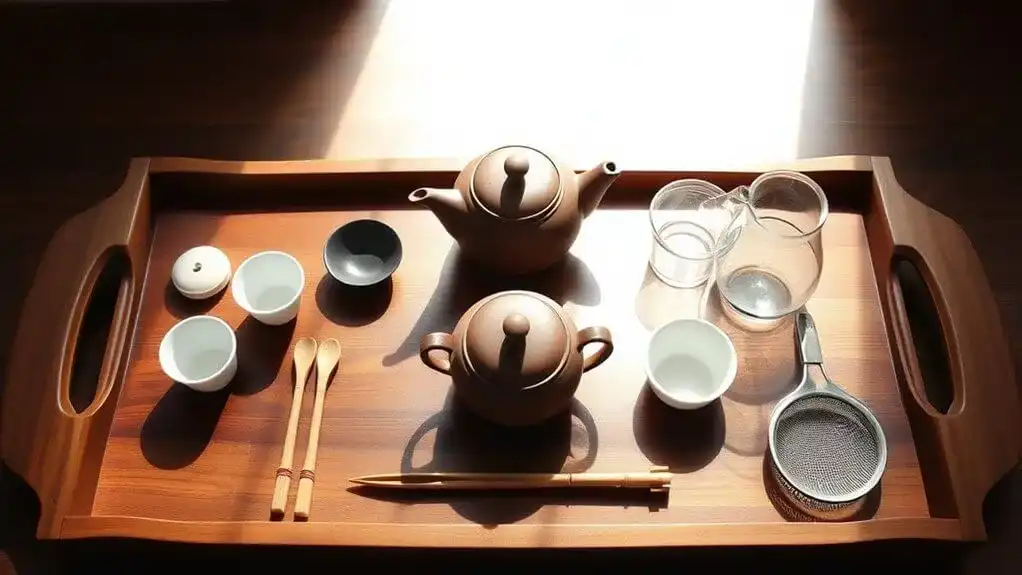
While enjoying tea requires minimal equipment, having the right tools can greatly enhance the brewing experience and the quality of each cup. Several important items form the foundation of proper tea preparation, starting with teapots available in various teapot materials like stoneware, clay, glass, and cast iron. For brewing precision, tools like tea thermometers and temperature-controlled kettles guarantee water reaches the ideal temperature for different tea varieties. Electric kettles can reduce brewing time by five to ten minutes compared to stovetop methods.
Infusers and strainers play a vital role by allowing tea leaves to fully expand and release their flavors. Traditional tools like gaiwans offer versatility for brewing various teas, while specialized equipment such as the bamboo chasen is necessary for preparing matcha. Many tea enthusiasts prefer double-wall glass teapots for their superior heat retention and durability. When selecting teaware, consumers should consider both functionality and durability, making sure their chosen tools match their brewing preferences and needs. Proper storage solutions like airtight tea tins help maintain the freshness and aromatic qualities of tea leaves over time.
Popular Tea Types and Their Origins

Tea's remarkable journey begins with the Camellia sinensis plant, which originated in the mountainous regions of southwest China, Tibet, and Northern India. During the Tang dynasty, it became China's national drink and spread throughout the Far East, eventually reaching global prominence through trade routes. The Tang dynasty period saw tea become so significant that the government implemented a tea tax to regulate its trade.
Each tea region produces distinct varieties with unique flavor nuances. Black tea accounts for approximately 84% of American tea consumption. Black teas include the robust Assam from India, the floral Darjeeling, and the bright Kenyan varieties. Green teas differ based on processing methods: Japanese teas are steamed for a crisp taste, while Chinese varieties are pan-fired for earthier notes. Beyond traditional teas, herbal infusions like chamomile and hibiscus offer caffeine-free alternatives. Specialty teas include oolong, with its partial oxidation, delicate white tea, and the fermented pu-erh from China. Today, tea has become the second most consumed beverage in the world after water.
The Art of Tea Preparation and Service
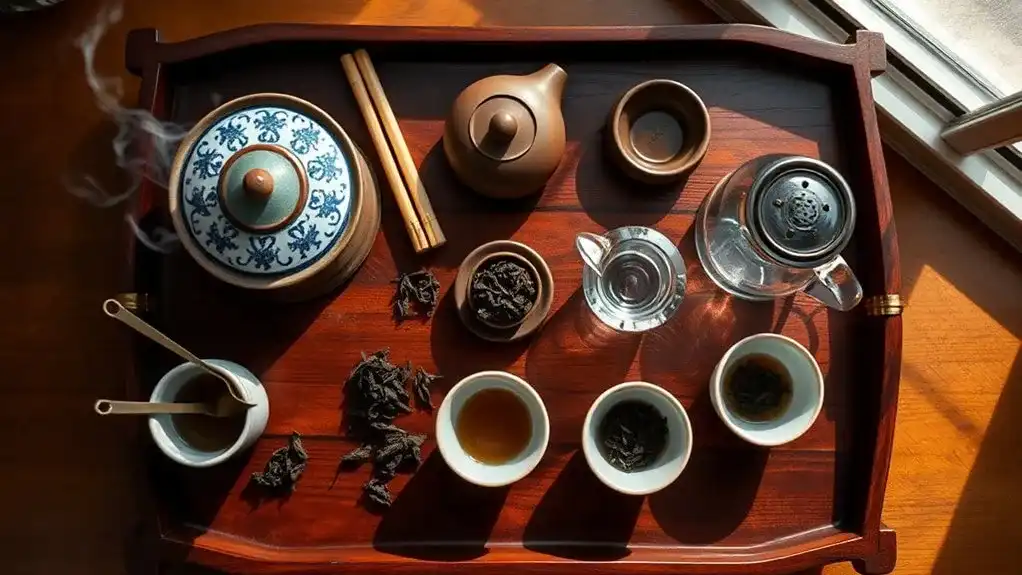
Mastering the art of tea preparation demands both technical precision and cultural understanding. Different cultures have developed unique approaches to brewing, from the methodical gong fu cha ceremony to the casual grandpa style common in China. These tea ceremonies reflect centuries of tradition and refinement in tea service. The transition of tea culture from East Asia to Europe transformed brewing practices across continents. Japanese teas particularly benefit from cold brew methods during warmer seasons for optimal flavor.
Proper infusion times are essential for achieving ideal flavor without bitterness. Water quality matters significantly when brewing any type of tea. While some methods call for quick steeps with multiple infusions, others embrace continuous brewing. Modern techniques like cold brewing have expanded the possibilities, offering new ways to experience tea's complex characteristics.
Advanced brewing methods often employ specialized equipment, from strainers and double kettles to precise measuring tools. These instruments help tea enthusiasts control variables like temperature and steeping duration, ensuring each cup reaches its full potential.
Conclusion
Diving into the world of tea vocabulary opens a treasure chest of knowledge that transforms casual sippers into seasoned connoisseurs. Whether it's understanding processing methods, mastering tasting terms, selecting equipment, exploring tea varieties, or perfecting preparation techniques, this extensive guide equips enthusiasts with the language they'll need. Armed with these essential terms, they're ready to steep themselves in the rich culture of tea appreciation.
